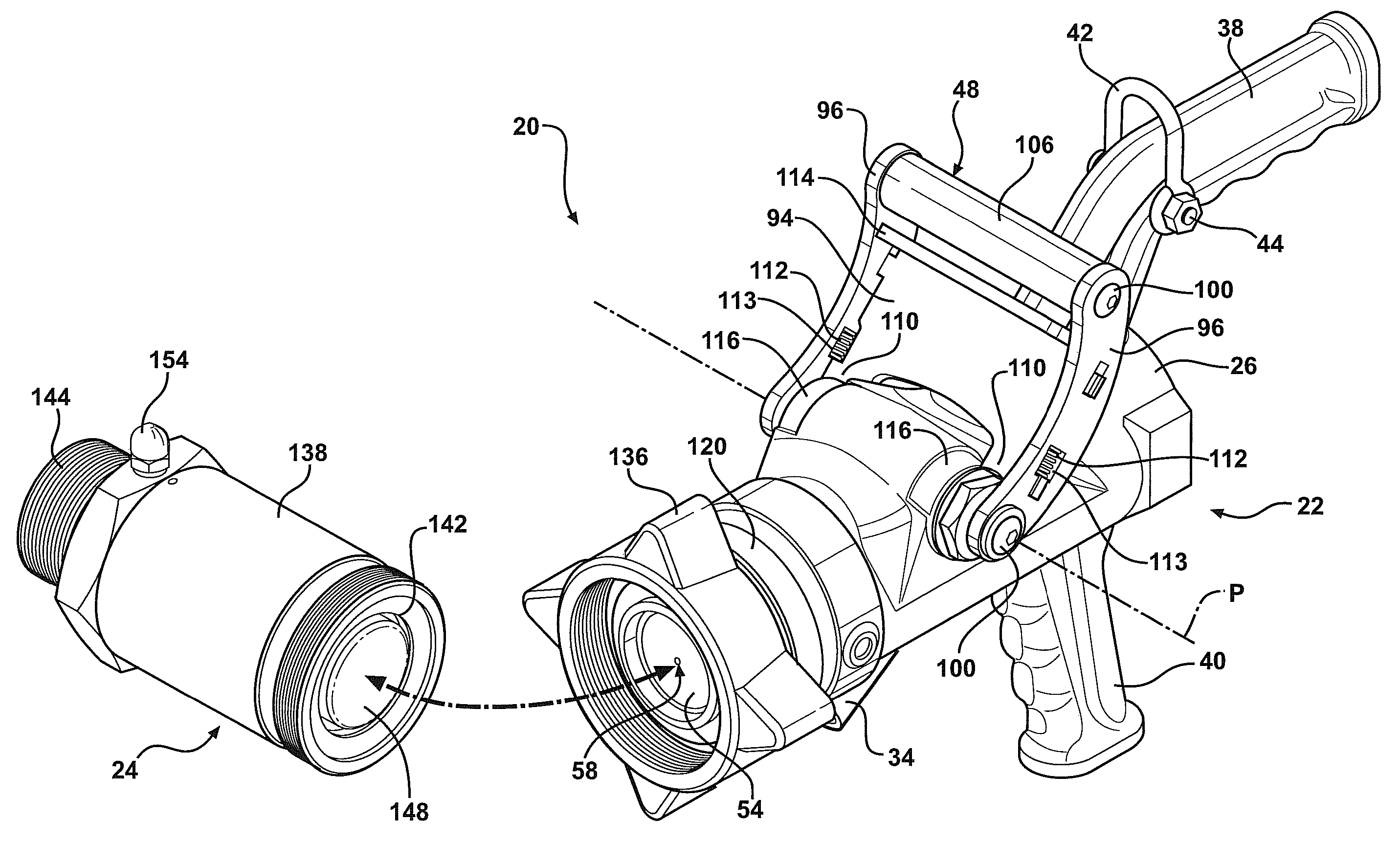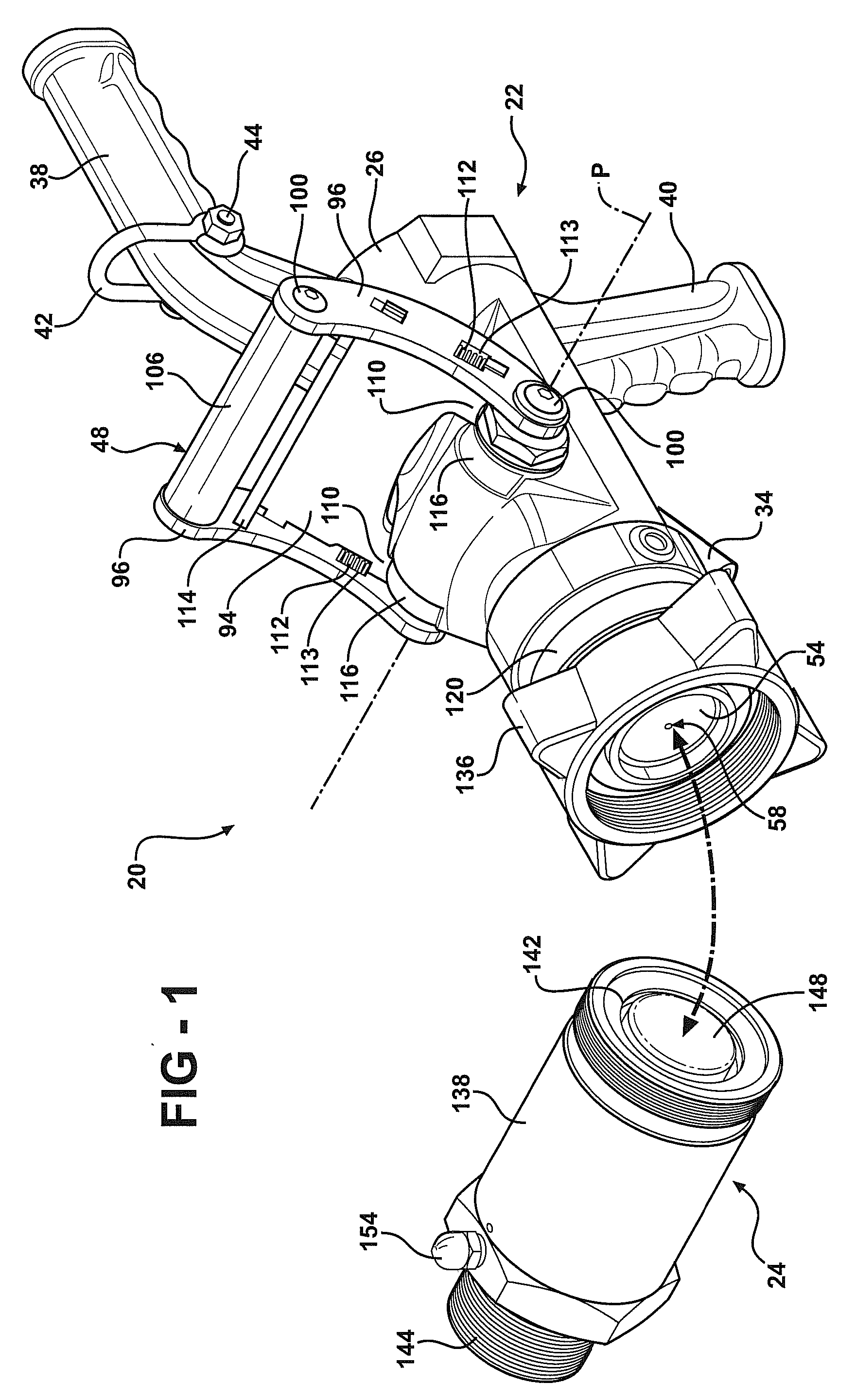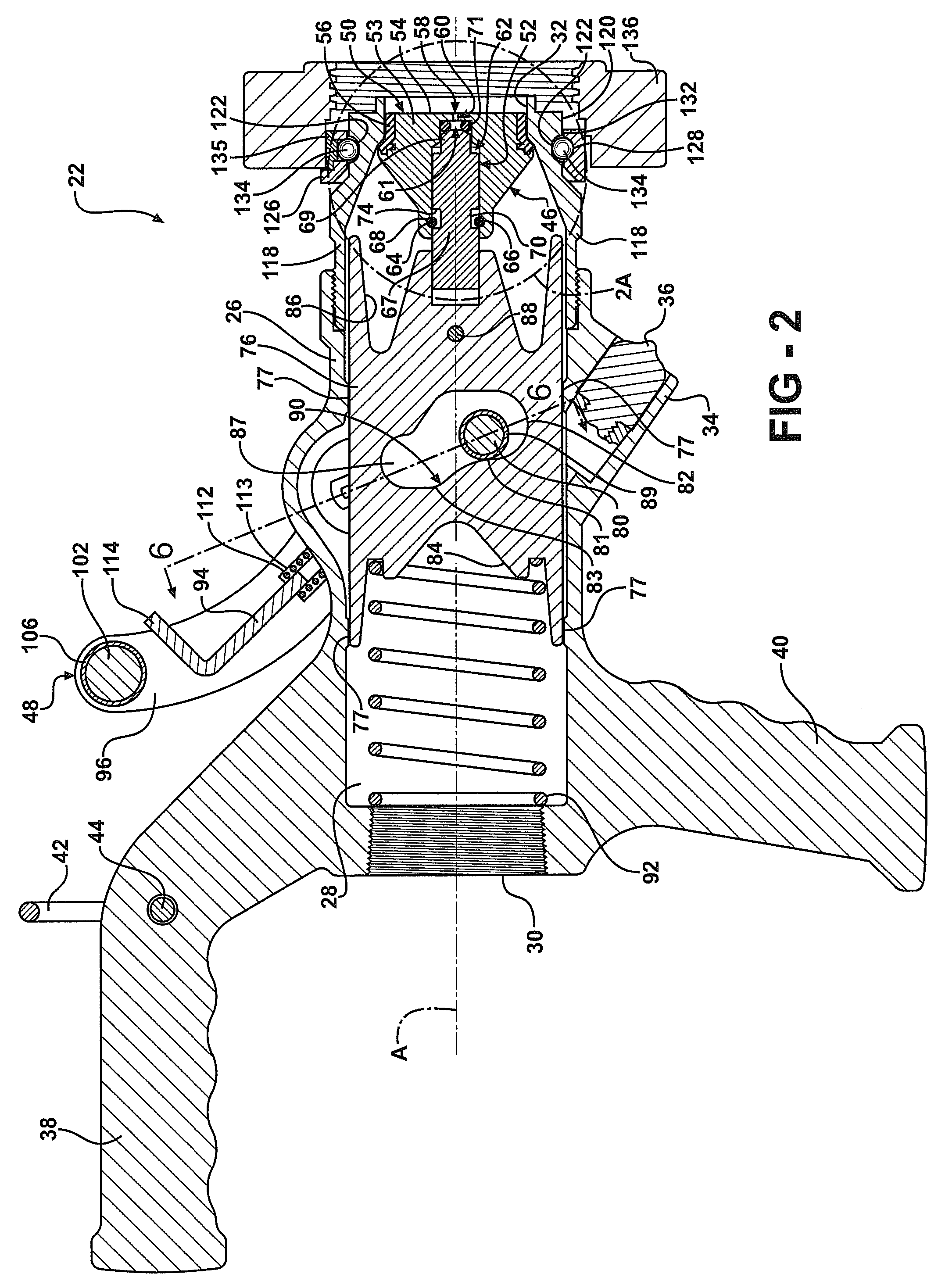Low emission fluid transfer device
a fluid transfer device and low emission technology, applied in the direction of pressure relieving devices on sealing faces, container discharging methods, couplings, etc., can solve the problems of inconvenient movement, and high cost of waste, so as to avoid inadvertent loss of fluid and reduce accidental movement
- Summary
- Abstract
- Description
- Claims
- Application Information
AI Technical Summary
Benefits of technology
Problems solved by technology
Method used
Image
Examples
Embodiment Construction
[0030]Referring to the Figures, wherein like numerals indicate like or corresponding parts throughout the several views, a fluid transfer system is generally shown at 20. Referring to FIG. 1, the fluid transfer system includes a transfer device 22 and a dry break coupler 24. Generally, the transfer device 22 is coupled to a conduit (not shown) attached to a fluid source. The dry break coupler 24 is generally coupled to a conduit (not shown) attached to a fluid destination such as a storage tank. The transfer device 22 is configured to releasably connect to the dry break coupler 24 to provide fluid communication between the fluid source and the fluid destination. The fluid travels from the fluid source to the fluid destination under a fluid pressure. The fluid can include liquid or gas. The present invention is particularly adapted for transferring liquid propane, but is not intended to be so limited.
[0031]Referring to FIGS. 2 and 2A, the transfer device includes a housing 26 that de...
PUM
 Login to View More
Login to View More Abstract
Description
Claims
Application Information
 Login to View More
Login to View More - R&D
- Intellectual Property
- Life Sciences
- Materials
- Tech Scout
- Unparalleled Data Quality
- Higher Quality Content
- 60% Fewer Hallucinations
Browse by: Latest US Patents, China's latest patents, Technical Efficacy Thesaurus, Application Domain, Technology Topic, Popular Technical Reports.
© 2025 PatSnap. All rights reserved.Legal|Privacy policy|Modern Slavery Act Transparency Statement|Sitemap|About US| Contact US: help@patsnap.com



